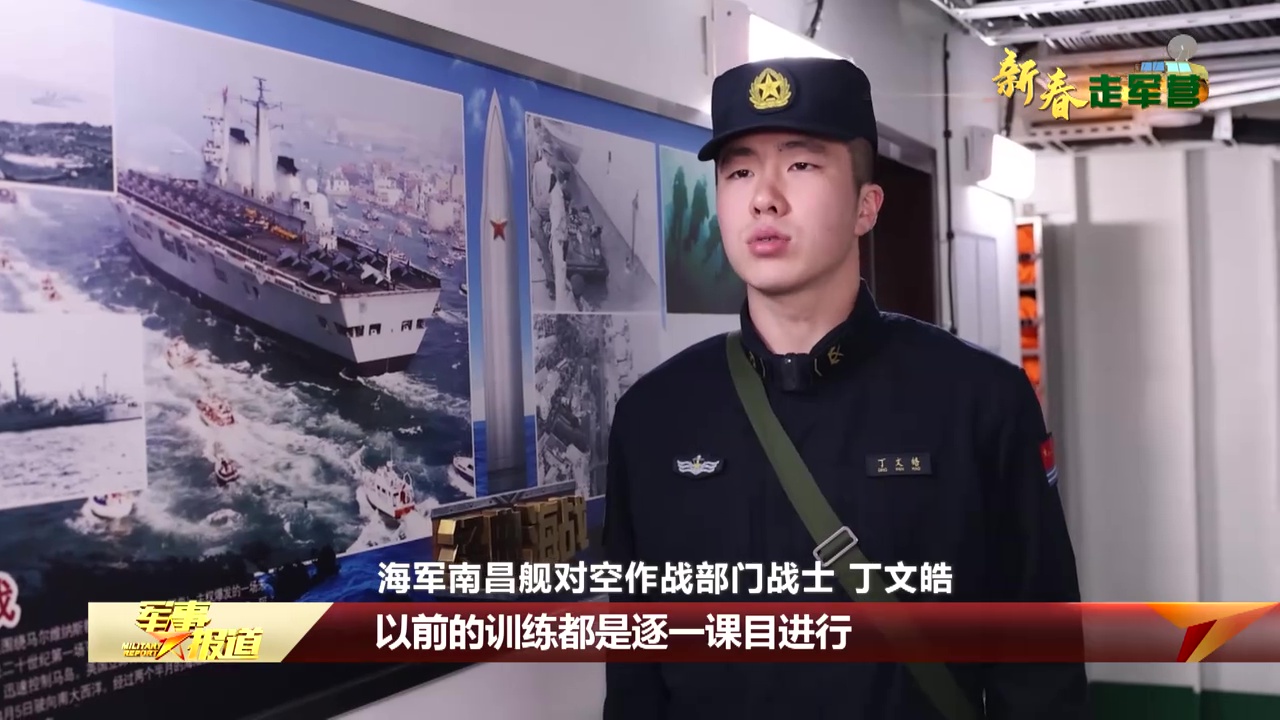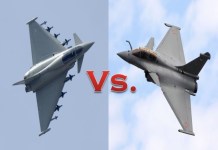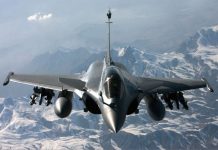An image has surfaced of a Chinese Type 055 destroyer displaying UK’s former aircraft carrier HMS Invincible returning from the Falklands War.
The HMS Invincible was the first of the Invincible-class of light aircraft carriers operated by the Royal Navy, which comprised three ships, including the HMS Illustrious and HMS Ark Royal.
The vessels were built as aviation-capable anti-submarine warfare (ASW) platforms to counter the Soviet submarine threat in the North Atlantic during the Cold War.
The HMS Invincible could carry Sea Harrier aircraft and Sea King ASW helicopters, and it was fitted with seven-degree ski-jump ramps.
The Invincible-class ships were also armed with two 20mm Phalanx CIWS mountings for anti-missile defense and two single 20mm anti-aircraft guns for close-in defenses. Typically, a vessel’s air group could comprise five Sea Harriers and ten Sea Kings.
The HMS Invincible was deployed during the Falklands war between Argentina and the UK. Interestingly, the People’s Liberation Army (PLA) Navy’s 101 Nanchang destroyer has a picture of the Invincible returning to HMNB Portsmouth after the Falklands War displayed in its hallway.

HMS Invincible During The Falklands War
In 1982, after years of simmering tensions, Argentina and the UK went to war over the Falkland Islands in the South Atlantic. It was one of the largest wars after World War II (WWII), which saw submarines and aircraft attacking and sinking warships, and infantry fighting hand-to-hand.
The Falklands War is also known for the near miss of the first aircraft carrier battle since WWII between the British Royal Navy’s HMS Invincible and Argentine Navy’s ARA Veinticinco de Mayo.
On May 1, 1982, Argentina decided to attack the British Taskforce, approaching the Falklands. The Argentine Navy’s combat aviation comprised the A-4Q Skyhawks.
The plan was to launch eight A-4Q Skyhawks from the ARA Veinticinco de Mayo to strike the British aircraft carrier to allow other warships to get within firing range to launch the deadly Exocet anti-ship-missiles against slow sailing transport ships carrying British troops.
The Argentine ships quickly detected the British ships. While Argentine pilots prepared to take off from ARA Veinticinco de Mayo, the wind was not on their side that day. Aircraft carriers, even the modern ones up to some extent, use the wind to help launch their aircraft.

The ARA Veinticinco de Mayo was a 40-year-old aircraft carrier at the time, with a relatively small flight deck and limited speed because of its earlier boiler damage which made it even more dependent on wind for the launching of the aircraft.
Moreover, the heavy bomb loads on the A-4Q Skyhawks’ only increased the requirement for wind.
The weather forecast for the day predicted there would not be sufficient wind to launch aircraft for at least 12 hours, and the Argentine carrier could not wait that long. On the evening of May 1, British aircraft, based on the intelligence provided by the US, was able to detect the Argentine ships.

The Veinticinco de Mayo was Argentina’s sole aircraft carrier, which the Argentines could not put at risk, so it retreated. The British forces pursued the carrier but could not catch it before it reached safer waters.
Each side’s window of opportunity to strike the other’s carrier had closed, and the largest aircraft carrier battle since WWII could not happen.
Nevertheless, the Argentines did try to attack the HMS Invincible. On May 30, the Argentine Navy’s two Super Étendards, one carrying the last remaining air-launched Exocet missile, together with four A-4C Skyhawks, each armed with two 230 kilogram bombs, took off to attack the Invincible.
The Argentine intelligence sought to locate the British carriers by analyzing the flight routes of the aircraft from the task force to the islands. However, the British pilots were instructed to fly low when leaving or returning to the carriers to disguise their position.

This tactic compromised Argentina’s attack, targeting a group of escorts 64.37 kilometers south of the main body of ships.
Both sides offer conflicting versions of this attack, with the British insisting that all the Argentine reports about an attack on HMS Invincible are false and that the ship was neither attacked nor hit.
China Trying To Revive The Memories
Argentina suffered a massive defeat in the Falklands war. It is fascinating to find the image of the HMS Invincible returning from the war displayed in the hallway of a PLA Navy destroyer.

This appears to be an attempt for China to revive the bitter memories of the Falkland war for Argentina. EurAsian Times reported earlier that Beijing had allegedly made behind-the-scenes moves to establish a new overseas naval base.
In November 2022, Argentina-based Chinese Communist Party (CCP) official Shuiping Tu allegedly achieved a breakthrough with local officials in the Tierra del Fuego province for a new naval base that would enable the People’s Liberation Army (PLA) Navy to control a critical passage connecting the Atlantic and Pacific Oceans.
The proposed facility would reportedly be accessible only to the Chinese military personnel, from where they will be in a position to monitor communications throughout the southern hemisphere.
China already has the Espacio Lejano Station in Argentina, a radio station located in Loncopué Department, Neuquén Province, operated by the Chinese National Space Administration (CNSA), and is believed to report directly to the People’s Liberation Army Strategic Support Force (PLASSF).
China is already deepening its military cooperation with Argentina by exploiting the UK’s post-Falklands War security policy.
Following the 1982 Falklands War, the UK enforced an arms embargo on Argentina to prevent the Argentine military from modernizing. As part of this policy, London has prevented Buenos Aires from acquiring several fighter jets by imposing sanctions on parts of those aircraft made in the UK.
For example, Argentina intended to acquire five French Dassault Super Etendard aircraft but was unable to because of the arms embargo over the British-made MK6 ejection seat used in the aircraft.
Argentina has not had an interceptor fighter for the past several years, whereas its neighboring countries, Brazil and Chile, are far better equipped, qualitatively and quantitatively.
The UK’s resistance to Argentine military modernization and advancement pushed Argentina into the hands of China. Argentina engaged with China in 2021 to evaluate Sino-Pakistani JF-17 fighters.
However, Argentine President Alberto Fernandez announced in December 2022 that the country had halted its plans to acquire a new aircraft.
“Argentina has to allocate its resources to more important things than the purchase of military aircraft. We are in an unequal continent, but there are no war problems, and unity among countries is sought,” Fernandez said in an interview with Financial Times.
Experts suggest domestic circumstances of the country may have had a role in the Argentine government’s decision to put a halt. The Argentine economy is currently grappling with inflation. Considering the current global recessionary trend, the situation does not bode well for the South American country.
US Trying To Keep The China Out
Meanwhile, the US is trying to convince the UK to lift its embargo and has also offered to sell the second-hand Danish F-16 fighter jets to Argentina to keep it from joining the Chinese camp.
A leading US Navy think tank, US Naval Institute (USNI), published a report in August last year drawing attention to China’s growing influence in Argentina through trade, finance, and power. The report expressed concerns that this growing closeness between the two countries may turn into military relations.
In the report, the USNI also talked about how the UK’s post-Falklands War security policy entailed risks of pushing Argentina closer to China and suggested a joint security cooperation investment in Argentina with the UK.
The US has offered to sell former Danish F-16 A/B MLU to Argentina and is negotiating with the UK to approve the sale, according to the USNI’s report, which described the UK’s post-Falklands War security policy as ‘outdated.’

In October 2022, the top Argentine Air Force delegation reportedly traveled to Denmark to inspect second-hand F-16 fighter jets offered by the US.
The USNI report argues that London must reconsider its arms embargo on Argentina, emphasizing that it is preferable to have Argentina’s military personnel influenced by the US instead of China.
- Contact the author at tanmaykadam700@gmail.com
- Follow EurAsian Times on Google News




